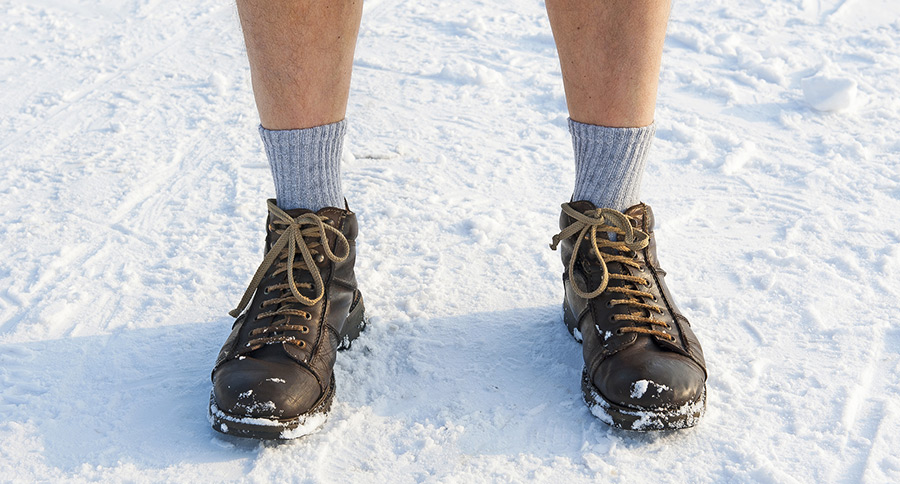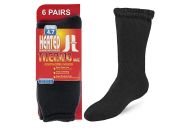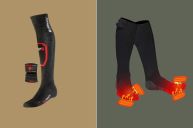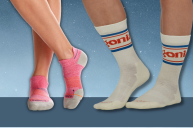Toe warmers made all the difference once you found them, but sock tech has caught up. What do you go with?
Need something to keep your toes warm when it's ultra cold outside? Yeah, you and everyone else. Toe warmers are an ever-popular option, but the technology instilled in winter socks, for hiking, hunting, or anything else, has come a long way.
What's your method of choice? If you're participating in cold weather hunting or fishing, or getting out for some winter sports, what do you do for your feet if it's down to, say, 20 degrees Fahrenheit or lower?
We figured a short either/or list for each option would be a little helpful, but ultimately it's your decision.
For Toe Warmers
The technology is old, but it seemed new-fangled when hand warmers and toe warmers first came out. Valuable for the skiing community, it stretched into just about any sector that liked to spend time outdoors in the winter.
In a value pack of Hothands toe warmers you'll get eight pairs, but they give you six hours of "lasting heat." And they're pretty powerful; in a sense, they should be consider "foot warmers" because they'll toast up anything inside a pair of ski boots or winter boots.
Against Toe Warmers
The non-reusable factor of toe warmers hits home right away. You're only getting so much out of each use, when good socks can last a whole lot longer. Oh, and those six hours of heat? Some adventures last longer than that.
The feeling on the sole of your feet can get a little annoying, too. Sometimes it's like they're taking up as much space as an electric heating pad in my boot. Maybe that's an exaggeration, but it's not like we're talking optimal comfort here.
Let's talk about the adhesive backing for a minute. It can and should be viewed as a benefit, but I can't help but get peeved at the likelihood of leaving residue on my socks. It's just not something I like, and it almost always happens to a small extent. The residue's usually washed off in one round of the washing machine, but adhesive toe warmers have developed a bad reputation with me because of that.
But really, if you want to go with the heat packs, these reasons aren't persuasive enough to get you to lean the other way. Maybe arguing for warm socks will...
For Warm Socks
In this sense, "warm socks" is a generalized term for the new wave of smart technology being used in socks. A traditional wool sock won't do, when you can blend fabric and make performance wear that performs exceptionally better than their past counterparts.
Take these Carhartt Arctic Wool Boot Socks for example. They seem pretty basic at first glance, but they've got antimicrobial features to fight stink, and quick-drying material to fight sweat.
Against Warm Socks
The prices of today's high-tech warm socks have gotten a little out of hand. Some people find it hard to spend $20 or more for a single pair of socks, especially if they'll only be worn for a portion of the year, likely a small one.
Also, it's more likely now than ever before to get ripped off, paying more for what you assume is a high-tech pair of socks. Break them out for a walk around the yard, and you're barely getting the basic, everyday warmth of a pair of cotton ankle socks. Face it, this could (and does) happen to the best of us.
We all should do our own homework, read customer reviews, and and determine for ourselves whether insole foot warmers or genuine warm socks are the way to go.
My verdict, if you still cared, is to skip the toe warmers and invest in good socks. I'm more than willing to believe the advancements in socks are enough for my needs. Maybe you're different, but that's just me.
They've never really been on any of my wish lists, but toe and hand warmers always seem to find their way into my Christmas stocking.
Maybe that's the way to go: Don't spend your own money on toe warmers to avoid the wasteful feeling, but gladly accept them as gifts to add to your outdoor supplies amongst the rest of your hunting & fishing gear.
NEXT: VIDEO: STEVEN RINELLA'S STRATEGY FOR LAYERING PANTS
WATCH




